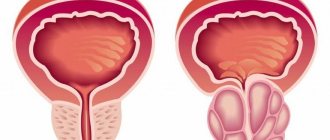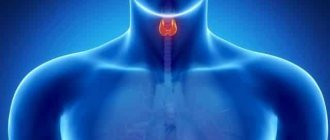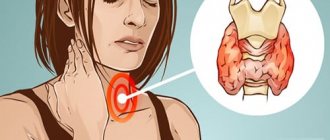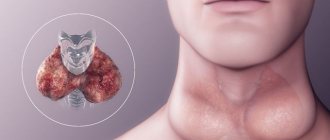IT IS IMPORTANT TO KNOW! D. Pushkar told how to defeat prostatitis at home...
Such a pleasant treatment for prostatitis for 147 rubles...
Have you been trying to cure PROSTATITIS for many years?
Head of the Institute: “You will be amazed at how easy it is to cure prostatitis by taking it every day...
Read more "
Symptoms also include pain in the lower abdomen and fever, but not everyone experiences this. One hundred percent symptom of gonorrhea is the “morning drop” syndrome. It is characterized by the appearance in the morning of a drop of cloudy liquid with pus near the external opening of the urethra. The symptom is not always visible to the naked eye; to detect it, you need to lightly squeeze the head of the penis with your hand.
The disease is dangerous because if it continues for about 2 months without treatment, it develops into chronic gonorrhea. After this, morning drop syndrome and discomfort during urination will be noted, and the eyes and joints will begin to be affected, completely unnoticed by the patient.
The main reason for the prevalence of the disease is that it is ignored in the first stages; then chronic gonorrhea in men is difficult to treat. Gonorrhea is also often confused with cystitis, but the symptoms of chronic gonorrhea in men and the symptoms of cystitis are very different.
During urination with gonorrhea there is a sharp pain, and cystitis is accompanied only by frequent urination. Cystitis is not characterized by anything like a “morning drop”; it does not produce any purulent discharge, only the volume of urine “at a time” decreases.
Many people believe that with cystitis, urine retention occurs, but this is not so; the characteristic symptom is frequent urge in the absence of urine, but with gonorrhea, urine is retained due to fear of sharp pain. The only common symptoms may be discomfort in the lower abdomen and fever. In addition, the imaginary symptoms of cystitis during gonorrhea appear abruptly and for no apparent reason (in fact, a latent period passes), and the symptoms of real cystitis increase gradually.
Diagnostics
Initial diagnosis at the first suspicion can be carried out at home. This home diagnosis is called the “two-glass test.” Before performing it, you need to wash your genitals in the morning, then take two glasses. The entire process of urination must be mentally divided into two stages. Emit the first half of urine into the first glass, and the second into the second. In case of illness, the urine in the first glass will be cloudy, and in the second glass it will be clear; most likely, the person is sick and needs to consult a doctor.
Diagnosis of gonorrhea is also carried out in medical laboratories. In this case, the discharge of the genital organs is examined, and a stained smear from the genital organs is examined under a microscope. This is the simplest and cheapest diagnosis, but recently cases of chameleon gonorrhea have become more frequent, when the pathogen is carefully hidden and is invisible under a microscope. Therefore, more and more often they recommend a more expensive diagnostic method, but at the same time a more accurate one - DNA diagnostics.
Treatment
Treatment of chronic gonorrhea was previously carried out by bougienage and infusion of silver nitrate. Bougienage is the expansion of the urethra with a silver rod. Currently, chronic gonorrhea is treated with antibiotic therapy.
The treatment regimen for chronic gonorrhea has two branches. The first vector is aimed towards strengthening the immune system. For this purpose, vitamins, gonovaccine and immunomodulatory drugs are prescribed. The second vector is aimed at eradicating the infection using antibiotics.
The treatment of each individual patient requires an individual scheme, this is due to the fact that at the moment there is still no general universal solution to this problem.
Unfortunately, many teenagers ignore the fact of the disease; they heal the infection on their own, as a result of which peritonitis can develop, which is an inflammation of the abdominal cavity. Self-medication should not be allowed. There are different types of gonorrhea pathogens, and not all of these types are affected by simple antibiotics. When the first symptoms appear, you must go to see a doctor, undergo an examination and take tests to determine the immunity of the pathogen to antibiotics.
After the course of treatment, it is necessary to ensure that the person is completely cured. To do this, the doctor usually arranges a provocation at the end of the course. There are several types of provocations: insertion of a metal bougie into the urethra, a request to eat salty food or drink beer before taking tests, infusion of silver nitrate into the urethra, vaccination, insertion of an electrode into the urethra. Usually, after such manipulations, the tests should remain negative, but if they become positive, then the disease has not yet been completely defeated.
Possible complications
Incorrect and late treatment of chronic gonorrhea is fraught with a chain of complications. These include:
- infertility 10% of men and 18% of women;
- peritonitis;
- Reiter's disease.
To prevent the disease, exclude casual sexual contact; in extreme cases, provoke copious urination immediately after sexual intercourse, or within 2 hours after sexual intercourse, you need to take Gitbitan, Cidipol or Mirastin. Reception is carried out according to the instructions indicated on the labels or packages.
Pharmacological action and spectrum of activity of Doxycycline
Doxycycline has a pronounced bacteriostatic effect, blocking the synthesis of proteins in the cell of a pathogenic microorganism. An important advantage of the drug is its ability to penetrate the cell wall of bacteria. Thanks to this, Doxycycline also has an antibacterial effect against intracellular microorganisms.
The spectrum of pharmacological activity is quite impressive and includes many pathogens.
Gram-negative bacteria
Doxycycline is active against gram-negative bacteria, which are typically associated with intestinal infections. This group includes campylobacteria, enterobacteria, Escherichia coli and Haemophilus influenzae, Klebsiella, gonorrhea pathogens, Shigella, Vibrio cholerae and other microorganisms.
Gram-positive bacteria
A distinctive feature of tetracycline antibiotics, including Doxycycline, is their low activity against most gram-positive bacteria. This explains the lack of effectiveness of tetracycline antibiotics for respiratory infections.
Almost the only gram-positive microorganism that is sensitive to Doxycycline is Streptococcus pneumoniae, the most common causative agent of pneumonia.
Anaerobic bacteria
Doxycycline has a bactericidal effect against anaerobic pathogens, which include Propionibacterium acnes. It is these bacteria that are associated with acne.
Other bacteria
The antibiotic is also effective against infections caused by chlamydia Chlamydophila psittaci and Chlamydia trachomatis, mycoplasmas Mycoplasma pneumoniae, treponemes and ureaplasmas.
Note that there is evidence of the activity of Doxycycline against asexual erythrocyte forms of Plasmodium falciparum. However, the exact mechanism of action has not yet been established.
The drug is absolutely ineffective against infections caused by Proteus, Pseudomonas aeruginosa and fungi.
Main characteristics of the product
Doxycycline belongs to the semisynthetic tetracycline antibiotics. But unlike Tetracycline and other drugs from this group, its action is more effective and safer, which is why Doxycycline is prescribed for the most severe infections. The action of the drug is aimed at a large number of bacteria, and therefore it is a broad-spectrum drug.
The product is active against a large number of gram-positive and gram-negative bacteria, including aerobic and anaerobic, as well as those that cause sexually transmitted infections. Haemophilus influenzae bacteria are the most sensitive to Doxycycline and pose a serious danger to humans. The antibiotic Doxycycline is not useful for the treatment of infections caused by Serracia, Proteus, Pseudomonas aeruginosa and some strains of Bacteroides fragilis.
In what forms is the drug available:
- Capsules 100 mg.
- Lyophilisate for injection in ampoules and vials of 100 and 200 mg.
How does the drug work?
Its use reduces the risk of gastrointestinal irritation, since the tablets dissolve very quickly. Lyophilisate is used only for infections accompanied by the formation of pus in order to speed up the effect of the drug.
Once in the stomach, Doxycycline is very quickly absorbed and penetrates the organs and tissues of the body in less than one hour. Doxycycline has the ability to cross the placenta and enter breast milk; the only thing the drug does not affect is the cerebrospinal fluid.
The active substance penetrates the intercellular membrane and has an inhibitory effect on protein synthesis inside the bacterial cell due to its effect on the cellular organelles responsible for protein synthesis. The drug disrupts the intracellular metabolism of bacteria, thereby slowing down their development. Lack of protein and microelements leads to disruption of vital functions, reproduction and death of microorganisms.
Compared to other tetracyclines, Doxycycline has virtually no effect on the intestinal microflora, is completely absorbed and maintains the concentration of the active substance in the body tissues longer than others.
Impact of other drugs on the effectiveness of the drug
When treating with Doxycycline and other drugs, it should be taken into account that negative reactions may occur:
- Absorption of the drug is reduced when combined with products containing iron, magnesium and calcium.
- Doxycycline concentrations are reduced by barbiturates, anticonvulsants and Rifampicin.
- The simultaneous use of Doxycycline and drugs with the active substance “cyclosporine” increases the toxic effect of the latter.
The use of tetracycline antibiotics together with penicillins or cephalosporins leads to a decrease in the antibacterial effects of these substances.- Doxycycline should be used with caution in diabetics, as taking antidiabetic drugs with tetracyclines may affect blood sugar levels.
- The combined use of Doxycycline and vitamin A leads to increased intracranial pressure.
Important! Doxycycline should not be taken with alcoholic beverages, as they negatively affect the concentration and effect of the drug. It is also recommended to reduce the consumption of dairy products during treatment with Doxycycline.
Doxycycline among other tetracyclines: differences
Compared to other tetracyclines, Doxycycline has a number of advantages:
— the antibiotic practically does not inhibit the normal intestinal microflora.
Due to this property, taking the medicine is very rarely accompanied by diarrhea;
- Absorbed most completely.
Other tetracycline antibiotics have an order of magnitude lower bioavailability;
- has a long-lasting effect.
The half-life of the drug is quite long (up to 10 hours), so it can be taken only twice a day.
I would like to note that cross-resistance exists between all drugs of the tetracycline group. That is, if Tetracycline or Metacycline did not have any effect, then, alas, you should not expect any effect from Doxycycline. The same resistance exists between Doxycycline and penicillin antibiotics.
Pharmacokinetics of Doxycycline: distribution features
Doxycycline, like most other tetracycline antibiotics, is easily absorbed into the blood and binds to plasma proteins. The drug is characterized by very high bioavailability: more than 90% (according to some data, almost 100%) of the active substance enters the blood.
After taking 200 mg of Doxycycline, the maximum level in the blood is reached within two hours. Therapeutic concentrations are detected in organs and tissues within 35–40 minutes after oral administration.
Experiments on animals have proven that the drug penetrates the placental barrier and, consequently, into the blood and tissues of the fetus. In addition, the antibiotic also passes into breast milk.
I would like to add that with long-term treatment the drug can accumulate. Under this term, which is not always and not everyone understands, lies a dangerous feature of the substance either to accumulate quantitatively in tissues or to accumulate an effect.
In the case of Doxycycline, functional cumulation occurs more often. It is expressed in the fact that in some patients, with repeated use of the medicine, the effect accumulates. Cumulation is usually recorded in patients with severe liver dysfunction, but the antibiotic still does not have a toxic effect.
Among the clearly negative pharmacokinetic properties of Doxycycline we also include its ability to react with a well-known complexon contained in bones and teeth—calcium. In this case, the antibiotic forms stable complexes with the macroelement. This chemical reaction comes with an unpleasant side effect, which we will certainly look at a little later.
Reviews about the antibiotic
There are not many reviews about the drug "Doxycycline". Those messages that are available are left mainly by patients who used this medication to treat chlamydia, as well as infectious diseases of the ENT and respiratory organs. Mostly they are positive. This drug is quite effective in the presence of the mentioned conditions.
It should also be noted that patients who have used it for acne and acne often leave positive reviews about Doxycycline.
It must be said that, in addition to positive reviews, there are also negative reports about the effect of this drug. As a rule, they are associated with the development of a large number of side effects from the gastrointestinal tract.
Source: fb.ru
Source: gepasoft.ru
Antibiotic: trust in doctors!
Experts recommend taking Doxycycline and other antibacterial agents after identifying the pathogen and determining individual sensitivity. Thanks to such measures, it is possible to reduce the development of resistant bacteria.
However, as practice shows, the selection of an antibiotic is often carried out empirically. In most cases, antibacterial agents are prescribed “by eye” based on the clinical manifestations of the disease. Only a qualified doctor or clinical pharmacist can cope with such a task.
Emphasizing the importance of consulting a specialist, I would like to once again warn patients: do not self-medicate with antibiotics! This can be very expensive. The long-term consequences of incorrect antibiotic therapy can come back to haunt you many years later.
You may have to face a situation where doctors, when treating any infection, simply throw up their hands helplessly, unable to find an effective antibiotic. And the reason for this is the persistence (addiction) of bacteria, which occurred due to independent “treatment” with antibacterial agents.
To avoid this situation in the future, we must remember: despite the theoretical possibility of freely purchasing Doxycycline in our pharmacies, in no case should you take the drug without a doctor's prescription.
STOP HUMAN AGING
Extending life by 12-20 years or more - up to 100 years. Diagnostics and therapy of aging. Individual anti-aging program. Read about all this on this blog guide and ask questions in the comments.
Who are we. We are a team of scientists, doctors, IT specialists and managers. Our goal is to defeat human aging. We are participants in scientific conferences on aging, organizers of numerous longevity schools (see video about us and our schools on the left), authors of books and articles.
Area of our scientific knowledge? Theranostics of aging is an emerging field of medicine, the main task and goal of which is to prolong human life through means based on evidence-based medicine methods used to manage dependent markers of the risk of mortality and age-related diseases.
How can we be of interest to you? In the process of our work, we studied everything that extended the life of any animal and reduced mortality in humans. We summarize our experience, tested through the criteria of evidence-based medicine, on this resource in order to introduce theranostics of aging into clinical practice.
How to meet us in real life? If you want to meet our team, come to the school of longevity , read reviews from real school participants or watch a video .
What do we believe? We believe that one day, perhaps even in the 21st century, humanity will finally defeat aging as a disease. Whether we will make it to this point depends on how long we still live today.
Our history. It all started in 2014, when the blog nestarenieRU and our scientific group. In 2017-2019, 7 longevity schools , the diagnosis of aging was introduced into clinical practice, and books were written, for example the book “Diagnostics of Aging” .
Is it possible to extend life? Most life extension methods today do not work - they have not worked from ancient times to the present day. Although charlatans will convince you otherwise.
We know almost everything about means that prolong life. 250 remedies extended the life of animals; only a very few of them were tested on humans and proved to be effective - we studied everything (see video on the left). Here is a partial list of what the Internet falsely promises to prolong life, rejuvenate, although there is no evidence for this, and sometimes it can even shorten your life and reduce its quality: curcumin , fisetin , collagen , ketogenic diet used on an ongoing basis, alpha lipic acid , nattokinase , antioxidants , fish oil or omega-3 , spirulina growth hormone or IGF-1 injections , nutrition and training based on DNA testing, DHEA , sports for the purpose of achieving records and competitions rather than moderate activity, testosterone injections without hypogonadism history, many of the substances with nootropic effects , not used for the treatment of dementia in the elderly or the consequences of traumatic brain injury, resveratrol , Q10 without the use of statins, TA-65 - telomerase activator, thyroid hormones , used without a diagnosis of hypothyroidism or during pregnancy, glycine , liposomal or other glutathione , acetyl cysteine (ACC or NAC) used on an ongoing basis, and not for medicinal purposes in a short course, Ginko Biloba , DMAE , lecithin, phosphatidylserine, phosphatidylcholine, choline , Antidepressants and neuroleptics , Inducers GABA, cinnamon, blueberry extract, pomegranate extract, complexes of vitamins and macro/microelements in modern nutrition conditions, and not in countries where hunger reigns, Beaver Dam, LRcombo, Juvenon, Bone Restore, Ortho Core, Life Extension Mix, Ortho Mind, LGcombo , centrum . And what can prolong life, and how to use it in consultation with doctors, nutrition and physical education specialists - read here .
Can we trust our information? From a scientific point of view, we rely on the most stringent level of evidence - RCTs conducted by independent expert groups. We provide links to the full scientific validity of our conclusions and do not rely on the opinions of individual doctors, scientists or specialists who may be mistaken (by accident or under the influence of pharmaceutical companies).
What can prolong life if used correctly under the guidance of doctors? Here is a list of scientifically proven remedies for extending life. Applying everything at once can cause harm. If you use anything without consulting your doctor, you will most likely only harm yourself. Many of these remedies will prolong life for some people, while shortening them for others - so you need to carefully study the indications and contraindications. Elimination of sleep deficiency, diet nRU-Diet (Diet for longevity nestarenieRU Diet) ( see video on the left ), methylcobalamin - vitamin b12 (strictly as prescribed by the doctor), diagnosis of aging, light but long-term physical activity ( see video below ), FMD diet, monitor your Body Mass Index and waist size, daily exposure to the open sun (not in the shade) for 1 hour, vitamin K2 (MK-7) 180-300 mcg per day, magnesium citrate 300-400 mg, lithium (strictly as prescribed doctor), extra virgin olive oil, meditation, glucosamine sulfate, taurine, methyltetrahydrofolate, raw broccoli, lycopene, inulin, vitamin D, cocoa 1-2 cups per day or coffee 2 cups per day in the morning - no more, etc. However, It is dangerous to use all these remedies without the consent of a specialist or doctor. The information presented on this blog is for informational purposes only and cannot be used for self-medication.
The pages and answers in the comments of this resource do not constitute a medical service, and the questions and comments of users are assessed from the point of view of the information analyzed in the articles and represent depersonalized conclusions from the analyzed publications - they do not constitute clinical recommendations.
What is aging and how to defeat it? We support the theory that the main cause of aging is the accumulation of damage, the main one of which is cross-linking of the extracellular matrix . At the moment, there are no ways to “treat” matrix, but our information, used together with your attending physician and other specialists, will increase your chances of extending your life and improving its quality, extending a healthy period of life - and therefore increasing your chances of being in the future, when all the “breakdowns” of the body can be corrected. Moreover, even changing your lifestyle will add ( according to research ) from 12 to 20 years of healthy life to you. And treating diseases (only together with a doctor), or preventing them at an early stage will allow most of us to live to about 100 years old. So far, science does not know how to live to 150 years or more. Those who claim this are mistaken. Centenarians who lived to be 101-117 years old are the lucky record holders. They were lucky by chance. But even chance has a limit - 117 years. But in the future we hope to extend life radically—manifold. Either we will defeat death, or it will defeat us - but we will not give up without a fight.
Here is a series of interesting articles on this blog.
We are often told that we need to go to bed on time and get up early in the morning.
Is this so - read on . Biohackers find animal studies and rush to immediately apply them on themselves, using substances that have not been tested in clinical studies on humans. With a probability close to 100%, biohackers will not prolong their lives, they may even kill themselves, but they will be of great benefit to science - read more . Most studies cannot build evidence, but are used only to search for hypotheses, so a link to a study is not proof - read more, , . You observed that a medicine helped you, your neighbor or friend said that some medicine helped them - this does not prove that it really helped you - read more . Most cases of depression can be treated with lifestyle changes, without the use of antidepressants - read on . We are often convinced that the sun is dangerous and harmful, as if we need to avoid the sun. Recent scientific evidence indicates that sunlight prolongs life, and its deficiency in northern countries increases mortality - read more . Sometimes a doctor prescribes us a medicine, we read the instructions and see the side effects from which we are horrified. And we don’t use a drug prescribed by doctors that could prolong our lives. Side effects of medications are sometimes not proven, but are simply sometimes written in the annotations just in case for insurance purposes - read on . There is a belief that elite sport prolongs life, based on low-quality research, although high-quality scientific evidence indicates that elite sport is more likely to shorten life - read more .
Join us. We are the same as you - we don’t want to grow old and we want to live long. Life is Beautiful. Let's extend it together.
What can we do today?
- Today we can extend our lives a little, slow down our aging a little. Each of us could die on average between 40 and 80 years of age. But we can extend our life to 100 years. In addition, extend the period of healthy life almost until death, saving yourself from a humiliating and helpless existence in a decrepit body. And in 30 years, you can reverse your age thanks to new technologies and live a very, very long time - a time unlimited by old age.
- Today we can diagnose “aging” to understand what disorders in our body increase our risks of dying earlier, shortening our lives, causing us to age faster than we otherwise could.
- Enter diagnostic results into an analytical anti-aging algorithm to get an answer to the question of what risks of premature mortality and faster aging show the results of aging diagnostics, based on scientific research.
- To get advice on how to correct your aging markers based on an aging diagnosis, you can seek advice from anti-aging doctors - read more >>
- This blog is for illustrative and educational purposes only and is not guaranteed for any medical use. For more detailed information, please consult research sources or your doctor. Self-medication is unacceptable, and will almost certainly only lead to a shortened life and to life-threatening conditions.
Let's think about it. Is it possible to stop human aging at all?
Nature itself shows us a clear example. Much began to seem possible in 2005, when scientists discovered that a species of mammal such as the naked mole rat does not age at all in appearance and lives 10 times longer than its own kind. Looking at a naked mole rat, it is impossible to determine how long he lived - 2 years or 30 years.
If it were one animal, it would be something strange. In fact, science knows a number of such animals. Until 2005, people simply did not search for such animals. Since childhood, each of us has become accustomed to the idea that everything in this world inevitably ages and dies. For many years, we accepted as the norm that everything ages, and did not notice that there are many organisms living around that have negligible aging - almost until death they look and feel like young people :
- Hydra lives forever. Hydras have been discovered that live more than 10 thousand years.
- The Arctic Icelandica mollusk lives on average about 400 years (up to 500 years). Doesn't know what old age is (at least we don't know).
- The Greenland shark lives 350-500 years (it’s difficult to calculate exactly).
- Carp and sea bass live about 200 years and hardly age.
- The Galapagos tortoise lives to be 177 years old. She dies not from aging, but from the fact that she becomes cramped in her shell.
- The Asian elephant lives to be 60-80 years old and hardly ages, but dies of starvation when the sixth set of teeth falls out.
- Some whales and sharks live to be 200-500 years old and hardly age.
- The sea urchin is practically immortal (we don’t know if it can age)
- And also many other animals: crocodiles, sharks, many species of birds, etc. also hardly age.
To stay up to date with the news, read ALL BLOG ARTICLES.
We invite you to subscribe by mail to the newest and most relevant news that appears in science, as well as news from our scientific and educational group, so as not to miss anything. Before subscribing, read the Mailing Agreement and Privacy Policy.
Doxycycline - indications for use
Indications for the use of Doxycycline are based on the spectrum of activity. Doctors usually do not prescribe tetracyclines for catarrhal infections - after all, these diseases are most often caused by staphylococci and streptococci. But the medicine is widely used for rare infections, as well as for sexually transmitted diseases.
The main diseases for which Doxycycline is prescribed include respiratory tract infections (pneumonia and bronchitis in adults and children) caused by Mycoplasma pneumoniae, Chlamydia trachomatis and Streptococcus pneumoniae.
In most cases of pneumonia and bronchitis, the pathogen is identified before prescribing Doxycycline. This is necessary in order to exclude infection with staphylococcus and streptococcus, which are also often the cause of pneumonia.
Doxycycline is widely used for sexually transmitted diseases: chlamydia, gonorrhea, mycoplasmosis, ureaplasmosis and even syphilis. Doxycycline successfully copes with uncomplicated urethritis (inflammation of the urethra), cervicitis (inflammation of the cervical canal) and proctitis (inflammation of the rectum) associated with chlamydial and mycoplasma infections.
Despite the fact that chlamydia is sensitive to Doxycycline, it is not always possible to achieve their elimination with monotherapy. In practice, treatment regimens for chlamydia include either several drugs (tetracyclines and macrolides) or loading doses of macrolides, in particular Sumamed.
Doxycycline is one of the effective antibacterial agents for ureaplasmosis. The antibiotic is used as a first-line treatment for non-gonococcal urethritis caused by Ureaplasma urealyticum (ureaplasma).
Doxycycline is also prescribed for infection with gram-negative bacteria, including chancroid, plague, tularemia, and Campylobacter infections of the fetus, which are caused by Campylobacter fetus. Treatment of brucellosis includes a combination of Doxycycline and Streptomycin.
It remains to add that Doxycycline is also used to prevent malaria associated with Plasmodium falciparum. The medicine is prescribed to travelers who are in endemic areas for a short time (up to 4 months).
The drug "Doxycycline": what are these tablets for?
There are many indications for taking this drug. Tablets can be taken in the following cases:
- in otolaryngological practice for infections of the ENT organs (tonsillitis, otitis, sinusitis and others);
- for inflammatory and infectious diseases that were caused by sensitive bacteria, as well as for respiratory tract infections (tracheitis, pharyngitis, bronchopneumonia, chronic or acute bronchitis, lung abscess, lobar pneumonia, pleural empyema);
- in gastroenterology for infections of the gastrointestinal tract and biliary tract (gastroenterocolitis, cholecystitis, traveler's diarrhea, bacterial dysentery, cholangitis);
- for infections of soft tissues and skin (infected burns, cellulitis, furunculosis, abscesses, wounds, felons, etc.);
- for infectious diseases of the eyes, yaws, syphilis, yersiniosis, rickettsiosis, legionellosis, chlamydia of various localizations, proctitis, prostatitis, Q fever, typhus (including tick-borne, typhoid, and relapsing), spotted fever, amoebic and bacillary dysentery, Lyme disease, actinomycosis, tularemia, cholera, malaria;
- in urology for infections of the genitourinary system (endometritis, cystitis, pyelonephritis, urethrocystitis, urethritis, endocervicitis, urogenital mycoplasmosis, acute orchiepididymitis, prostatitis, gonorrhea);
- for exacerbation of chronic bronchitis in patients under 65 years of age as a first-line drug (without concomitant diseases);
- for bronchopulmonary infection (exacerbation) of staphylococcal origin in people with chlamydial arthritis, cystic fibrosis and granulocytic ehrlichiosis;
- for acute prostatitis and urinary infection in older people (caused by Escherichia coli);
- in combination therapy for leptospirosis, ornithosis, trachoma, psittacosis, granulocytic ehrlichiosis;
- in combination therapy for brucellosis, whooping cough, osteomyelitis, subacute septic endocarditis, sepsis, peritonitis;
- for the prevention of purulent postoperative complications, when traveling to areas where strains that are resistant to chloroquine are especially common, as well as for malaria.
Doxycycline as an alternative to penicillin antibiotics
If the patient is allergic to penicillin antibiotics, then Doxycycline is the drug of choice (second-line drug) for the treatment of uncomplicated gonorrhea caused by Neisseria gonorrhoeae, syphilis (caused by Treponema pallidum), and infectious diseases caused by clostridia.
Treatment of hepatitis in Simferopol
In addition, Doxycycline is also used as an additional drug in the treatment of acute intestinal amebiasis, an extremely unpleasant intestinal infection.
The drug "Doxycycline": dosage
As a rule, doctors prescribe this drug in the following dosage: on the first day - 200 mg, and then 100-200 mg (depending on the course of the disease).
If the patient has a severe infectious process, then throughout the entire therapy he is recommended to drink 200 mg of medication per day.
For pathological conditions caused by chlamydia, mycoplasma or ureaplasma, the antibiotic is prescribed in a standard dosage. It is advisable to take this drug for 11-15 days.
Is it possible to combine Doxycycline with other tablets? The compatibility of this drug with other drugs is quite real. As a rule, it depends on the type of disease present and its course. If required, the antibiotic in question can be combined with Clindamycin and Gentamicin.
Acne and Rosacea: Doxycycline for Acne
The activity of the antibiotic against microorganisms that cause skin diseases deserves special mention. Due to these qualities, it is used for oral treatment of acne (acne) and rosacea. Simply put, Doxycycline is one of the effective medicines that help get rid of acne.
But do not forget that the treatment of these diseases should be carried out by dermatologists. Treatment of acne and rosacea is a complex and lengthy process. The treatment regimen includes more than one drug, and the course of therapy can last several months. Therefore, you need to be patient, and the most important thing is to find your dermatologist and not self-medicate.
When you can’t do without laboratory diagnostics
Scientists have found that many strains of gram-negative bacteria may be insensitive to Doxycycline. Therefore, when identifying these pathogens, it is important to conduct an individual sensitivity test before prescribing an antibiotic.
Escherichia coli, causative agents of acute intestinal infections, Enterobacter aerogenes, Shigella, Haemophilus influenzae, and Klebsiella may be resistant to Doxycycline.
Note that the last two pathogens - Haemophilus influenzae and Klebsiella - are associated with respiratory infections of the respiratory tract.
Standard dosage of Doxycycline according to instructions
Adult dose
Let us immediately note that the usual dose and frequency of use of Doxycycline differs from other antibiotics from the tetracycline group.
For adults, the usual dose of oral doxycycline is 200 mg on the first day of treatment, divided into two doses (every 12 hours). After this, the dosage is reduced to 100 mg per day once.
For the treatment of more severe infections, it is still recommended to take 100 mg of Doxycycline twice a day for the entire course of therapy.
The duration of treatment is determined individually. Note that when treating streptococcal infections, the course of treatment should be at least 10 days.
Separately, I would like to say about the treatment of pulmonary anthrax. For these purposes, it is recommended to take Doxycycline 100 mg twice a day for at least 60 days.
Dose for children
The instructions for use of Doxycycline indicate that children over 8 years of age (weight up to 45 kg) are recommended to take 4 mg of the drug per kilogram of body weight on the first day of treatment, divided into two doses. On the second and subsequent days, the dosage should be halved (2 mg). Frequency of application: once a day.
This not entirely standard treatment regimen is explained quite simply. At the beginning of antibacterial therapy, harmful microorganisms are dealt a sudden and deafening blow with a double dose of Doxycycline. After this, weakened and weakened pathogenic bacteria respond well to low doses of antibiotics.
Directions for use and doses
Doxycycline is prescribed orally for adults and children over 12 years of age. Prescribed on the first day of treatment is 200 mg per day. In the following days - 100 - 200 mg per day, depending on the severity of the clinical course of the disease. Frequency of administration – 1 – 2 times a day. The duration of the course of treatment is determined individually, continuing treatment for at least 24–48 hours after the symptoms of the disease disappear and body temperature normalizes. In the treatment of gonorrhea, Doxycycline is prescribed: for patients with acute uncomplicated urethritis - in a course dose of 500 mg (1st dose - 300 mg, subsequent 2 doses - 100 mg each with an interval of 6 hours); in the case of a complicated form of gonorrhea, the course dose of the antibiotic (800–900 mg) is divided into 6–7 doses (300 mg for the 1st dose, 100 mg at 6-hour intervals for 5–6 subsequent doses). For uncomplicated infections of the urethra, cervix and rectal area caused by Chlamydia trachomatis - 100 mg 2 times a day for at least 7 days. For orchitis or epididymitis caused by Chlamydia trachomatis or Neisseria gonorrhoeae, –100 mg 2 times a day; Duration of treatment is at least 10 days. For genital infections in men caused by Ureaplasma urealyticum, the patient and his sexual partner must undergo a course of treatment with the drug at a dose of 100 mg 2 times a day for 4 weeks. For primary and secondary syphilis, the daily dose of the drug is 300 mg in several doses, the course of treatment is at least 10 days. For the treatment of tropical malaria resistant to chloroquine, the drug is used in a daily dose of 200 mg for at least 7 days. For the prevention of malaria - 100 mg per day for adults. Preventive treatment can begin 1 to 2 days before traveling to a region with an unstable epidemic situation and continue for 4 weeks after returning from it. Treatment of patients with relapsing and typhus is carried out with a single use of the drug in a dose of 100 - 200 mg. For the treatment and prevention of cholera in adults, 300 mg of Doxycycline is prescribed orally once; for the prevention of Japanese river fever ( Fever
– a special reaction of the body that accompanies many diseases and is manifested by an increase in body temperature.
A febrile reaction most often occurs with infectious diseases, with the introduction of therapeutic serums and vaccines, with traumatic injuries, crushed tissue, etc.) - a single dose of 200 mg of the drug. For the treatment of leptospirosis ( Leptospirosis
is a common infectious disease that selectively affects the liver, kidneys, and vascular capillaries), the drug is prescribed at a dose of 100 mg 2 times a day for 7 days.
Dosage for sexually transmitted infections
The high activity of Doxycycline against gonococci and intracellular pathogens determines the effectiveness of the drug against STDs - diseases that are sexually transmitted.
According to the instructions for Doxycycline, standard treatment regimens depend on the disease.
Gonorrhea
For uncomplicated gonococcal infection (except for anorectal infection in men), you need to take 100 mg of the drug twice a day for a week. For gonococcal or chlamydial acute orchiepididymitis (inflammation of the testicle and epididymis), take 100 mg of Doxycycline twice a day for at least 10 days.
Chlamydia
For uncomplicated urethritis, cervicitis and proctitis associated with Chlamydia trachomatis, it is also recommended to take 100 mg of the drug twice a day. The course of treatment is a week.
It must be emphasized that we are talking specifically about uncomplicated manifestations that develop in the initial stage of chlamydia. Let us remember that the insidiousness of Chlamydia trachomatis lies in the absence of clinical symptoms in the early stages of the disease. Therefore, chlamydia is diagnosed much later than we would like - usually already in the chronic stage. And, accordingly, the treatment regimen is not so simple, and the course of therapy is not one week, but three or even more.
Syphilis
For early syphilis, the drug is indicated for patients who have an allergic reaction to penicillins. Doxycycline is taken 200 mg, divided into two doses, for two weeks.
For syphilis lasting more than one year, the dosage is 200 mg for 4 weeks.
Instructions for use
Application of capsules
Doxycycline is taken with or after meals. A single dose is swallowed whole, in a sitting position.
It is important to drink plenty of liquid - water, milk, tea. In the evening, the drug should be taken long before bedtime
Doxycycline is used to treat illnesses only in children over 12 years of age and adults. The daily dosage on the first day of the disease is 200 mg (1 capsule morning and evening). On the following days, the dose is 100 mg once a day.
The duration of taking the drug is determined by the doctor and is often 10 days.
It is important to continue taking Doxycycline for another 1-2 days even after symptoms disappear and body temperature reaches normal levels.
Methods of use in the treatment of acne
The daily dose is 50 mg of Doxycycline for 6-12 days. It is recommended to take drug substitutes in which the dose of the active substance is 50 mg.
Treatment course for sexually transmitted diseases and malaria
The daily dosage is 200 mg twice a day. Frequency of administration: twice a day. Duration of use is 7-10 days. In the case of treatment of syphilis, the daily dose is 400 mg, the duration of administration should be at least two weeks.
Prevention of malaria
Daily doses for adults are 100 mg, for children over 12 years of age - 2 mg/kg body weight. You should start taking the drug 2 days before your planned trip to dangerous regions, continue for the entire period of your stay and for another month after returning.
To prevent cholera, Doxycycline is used once at a dose of 300 mg.
Prevention of travelers' diarrhea involves taking 200 mg of the drug during the first day and 100 mg over the next two days.
Prevention of leptospirosis consists of taking 200 mg of Doxycycline once a week during all periods of stay in dangerous areas.
Application of ampoules
The drug in this form is used for the treatment of severe infectious pathologies. The recommended daily dose for adults is 200 mg in the form of intravenous injections (injections) or infusions (intravenous drip). More often, the doctor prescribes Doxycycline twice a day - 100 mg in the morning and in the evening.
For children 8-18 years old, the daily dose is calculated as follows: on the first day of illness - 4 mg per kilogram of weight once or twice, then - 2-4 mg per kilogram of weight for 1-2 administrations.
Prevention of malaria: how to take the medicine?
For the prevention of malaria, the recommended dose of Doxycycline for adults according to the instructions is 100 mg per day.
Children over 8 years of age should take 2 mg per kilogram of body weight once daily.
Prevention should begin 1–2 days before the intended trip to malariogenic areas. Doxycycline should be taken daily during travel, and additionally for 4 weeks after returning.
If you are planning to travel to a country with a malaria epidemic, you should remember that not a single modern drug, including Doxycycline, guarantees complete protection against malaria. And doctors honestly admit this.
Even when taking an antibiotic, do not forget about protective measures. Use mosquito nets, protect exposed areas of the body in the evening, use repellents - these measures are no less important than taking Doxycycline.
How is gonorrhea treated?
Usually, for patients with fresh and uncomplicated gonorrheal process, Doxycycline is prescribed orally. The initial dose, as well as the amount of medicine at subsequent doses, is determined only by the doctor. You need to take the medicine every 12 hours. It is forbidden to change the dosage yourself.
Read also What rashes occur with gonorrhea
For complicated and chronic forms of gonorrhea, the medicine is prescribed according to the same scheme, but the course of treatment requires slightly more medicine. In some cases, combination treatment is possible - with the use of Clindamycin or Gentamicin (these drugs are prescribed only if indicated).
Sometimes, if gonorrhea is severe or it is necessary to treat its advanced forms, the doctor may prescribe increased dosages of Doxycycline at each appointment. Men can take the drug once in a high dosage. If after this there is no improvement, then proceed to taking Doxycycline in standard doses for 5 days.
Intravenous injection of the medication is also possible. For this, lyophilized powder is used: it is dissolved in distilled water and added to saline solution. The solution is administered over 1-2 hours. The duration of the procedures is 12 hours.
Contraindications: when is an antibiotic prohibited?
Let's face it: Doxycycline is not the safest antibiotic. Among the contraindications to its use:
- individual sensitivity to tetracycline antibiotics;
- severe liver failure;
- pregnancy and lactation;
- children's age (up to 8 years). The age limit is due to the fact that the drug forms insoluble complexes with calcium in teeth and bone tissue. Therefore, the prescription of this antibiotic during the period of tooth growth may cause a permanent change in the color of tooth enamel. Note that the complex of Doxycycline with calcium has a brownish tint. Consequently, young children taking tetracycline antibiotics have every chance of losing their snow-white smile.
- porphyria is a hereditary pathology that manifests itself as photodermatoses.
Indications and restrictions
The powerful action of Doxycycline allows it to be used to treat a large number of bacterial infections. Indications for use can be presented in the following list:
- Respiratory system infections: pneumonia, bronchitis, pleurisy, emphysema, lung abscess.
- ENT diseases: otitis media, sinusitis, tonsillitis, frontal sinusitis.
- Venereal infections: ureaplasmosis, syphilis, chlamydia, gonorrhea.
- Gastrointestinal diseases: dysentery, salmonellosis, cholangitis, gastroenterocolitis of bacterial origin.
- Skin diseases: furunculosis, carbunculosis, phlegmon, purulent wounds and burns.
- Urinary system infections: cystitis, pyelonephritis, urethritis, prostatitis, urethroprostatitis.
- Chlamydia conjunctivitis and other bacterial eye diseases.
Doxycycline is prescribed for other pathologies in complex therapy: psittacosis, Q fever, Lyme disease, peritonitis, leptospiratosis, typhus, tularemia, osteomyelitis, ehrlichiosis and others. This drug can be used to prevent malarial diseases when traveling to places where strains of bacteria that are not sensitive to chloroquine are common.
It is often prescribed by urologists, since most diseases of the urinary system arise from the proliferation of bacteria that are highly sensitive to Doxycycline. After abdominal surgery on the kidneys or bladder, the drug is used to prevent wound suppuration and infection. For cystitis and urethritis caused by sexually transmitted bacteria, Doxycycline is prescribed not only to the patient with complaints, but also to his partner to prevent re-infection.
According to the instructions, Doxycycline during pregnancy is contraindicated during the 2nd and 3rd trimesters. But most experts are afraid to prescribe this antibiotic even in the first three months of gestation.
Since the antibiotic has the ability to pass into breast milk in high concentrations, breastfeeding should be stopped during its use.
Other contraindications:
- Age up to 8 years.
- Lupus erythematosus.
- Porphyria.
- Liver failure.
- Myasthenia.
- Leukopenia.
- High sensitivity to tetracyclines.
Side effects from the drug occur infrequently and can be expressed in the following manifestations:
- Constipation, diarrhea, enterocolitis.
- Symptoms of intoxication.
- Rash, itching, drug-induced lupus, skin hyperemia.
- Decreased platelet production.
It is extremely rare that the product affects the color of teeth. With prolonged treatment, the level of nitrogen in the blood increases.
The positive point is that Doxycycline does not cause candidiasis, for which these tablets are very often prescribed to women.
Doxycycline and pregnancy: be careful!
Doxycycline is a category D drug. This means that there is a theoretical possibility of a teratogenic effect of the antibiotic.
At the same time, there have been no adequate and controlled studies on the use of Doxycycline in pregnant women. Most studies studying the experience of using Doxycycline reported no effect of the drug on the fetus with short-term use in the 1st trimester of pregnancy. The effects of long-term therapy have not been studied.
TERIS - Teratogenic Information System - has published data that suggests that therapeutic doses of Doxycycline do not pose a teratogenic risk. However, the clearly insufficient amount of evidence does not make it possible to completely deny the existence of a teratogenic effect.
Given these, frankly, contradictory data, most specialists refrain from using Doxycycline in the 1st trimester. And in the 2nd and 3rd trimester of pregnancy, the drug is officially contraindicated.
Composition, form, description and packaging of the medicinal product
Before answering the question: “Doxycycline – what are these tablets for?”, you should tell what the composition of this medication is.
The drug in question contains an active element such as doxycycline (this substance is presented in the instructions in the form of doxycycline hyclate). In addition to it, the drug contains the following additional ingredients: magnesium stearate, lactose monohydrate and potato starch.
The drug "Doxycycline" goes on sale in the form of hard gelatin capsules, which are cylindrical in shape and yellow in color. Inside they contain a yellowish powder with white inclusions.
Very often the presented form of the drug is called tablets. Although in reality they are not.
The capsule shell of this product consists of propyl parahydroxybenzoate, glycerin, methyl parahydroxybenzoate, gelatin, additives E110 and E104, and sodium lauryl sulfate.
In what packaging is Doxycycline sold? Capsules are placed in blister packaging, which are contained in cardboard boxes.
It should also be said that this medication is also produced in the form of a lyophilisate, which is used to prepare an infusion solution.
Doxycycline: special instructions for use that cannot be ignored
Tetracycline antibiotics have a number of not very positive qualities that can affect our body. However, we are able to neutralize the negative effect of Doxycycline if we follow the rules for using this drug.
Experts warn that Doxycycline can irritate the esophageal mucosa. To avoid the formation of ulcerative lesions, drink as much fluid as possible during treatment.
Tetracycline antibiotics and, in particular, Doxycycline, have a photosensitizing effect, that is, they increase the sensitivity of our body to the effects of ultraviolet radiation. Therefore, during treatment you should avoid exposure to the sun and use sunscreen cosmetics.
And one last thing. Doxycycline binds irreversibly to calcium. In this regard, experts do not recommend drinking milk, kefir and other dairy products for three hours before and after taking the drug.
Use of doxycycline in children
Important!
Although there is evidence that doxycycline rarely and does not significantly stain teeth black, the minimum recommended age for its use in children is 8 years. If the infections are not critical, then the drug is used only in children over 12 years of age.
Doxycycline is well absorbed after oral administration and reaches therapeutic concentrations within 2 hours. It penetrates well into many tissues and organs of the body, binds to plasma proteins by 80-95%. Doxycycline is highly concentrated in bile and excreted in excrement and through the kidneys. The medicine is excreted in the period from 18 to 22 hours. For children, oral or injectable forms may be used. Doctors sometimes use doxycycline to treat infections of the lungs, nose, and throat, or for allergies to other groups of antibiotics. Teens may also use doxycycline to treat acne and rosacea.
Doxycycline is not suitable for everyone. It may interact with some other medications and cause side effects
Doctors will use caution when prescribing doxycycline, especially to children and pregnant women
Note!
Your doctor may prescribe doxycycline to treat many bacterial infections, including those of the lungs and genitourinary tract (especially in teenagers). If the benefits outweigh the risks, doctors may prescribe the drug even to children 8 years of age and younger with severe or life-threatening infections.
Side effects: what to expect during and after treatment?
Due to the almost complete absorption of Doxycycline, side effects in the lower intestine, such as diarrhea, are very rare. Among the adverse events associated with treatment, it is worth noting:
- gastrointestinal manifestations: vomiting, nausea, loss of appetite, inflammation of the tongue, impaired liver function, ulceration of the esophagus and enterocolitis (inflammation of the intestines);
- dermatological manifestations: photosensitivity, skin itching, erythematous rash; in severe cases - Steven-Johnson syndrome; very rarely - exfoliative dermatitis, erythema;
- neurological manifestations: increased intracranial pressure, headache, dizziness;
- manifestations from the hematopoietic organs: changes in the blood picture - hemolytic anemia, thrombocytopenia, neutropenia, eosinophilia;
- allergic manifestations: urticaria, Quincke's edema, serum sickness, exacerbation of systemic lupus erythematosus, in severe cases - anaphylactic shock.
Side effects and contraindications for use
Taking Doxycycline can cause the following side effects:
- nausea, sometimes vomiting;
- decreased appetite up to anorexia;
- swelling, rash, itching and other allergic reactions);
- attacks of dizziness;
- photosensitivity;
- eosinophilia;
- thrombocytopenia and other blood disorders;
- changes in the biochemical composition of blood;
- development of vaginal candidiasis and intestinal dysbiosis;
- infection with resistant strains of microorganisms.
This medicine is contraindicated for use if:
- increased sensitivity of the body to Tetracycline and its derivatives;
- second half of pregnancy;
- lactation (if there is a need for treatment with Doxycycline, then the woman should transfer the child to artificial feeding);
- porphyria;
- severe liver failure;
- leukopenia.











